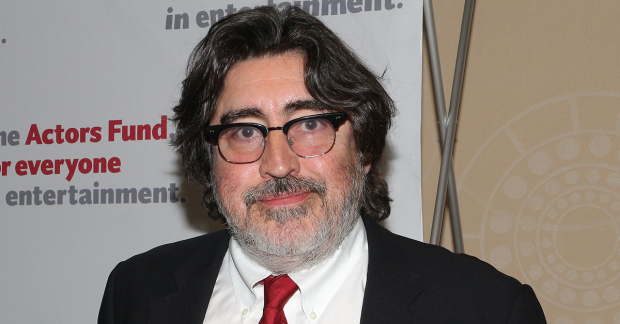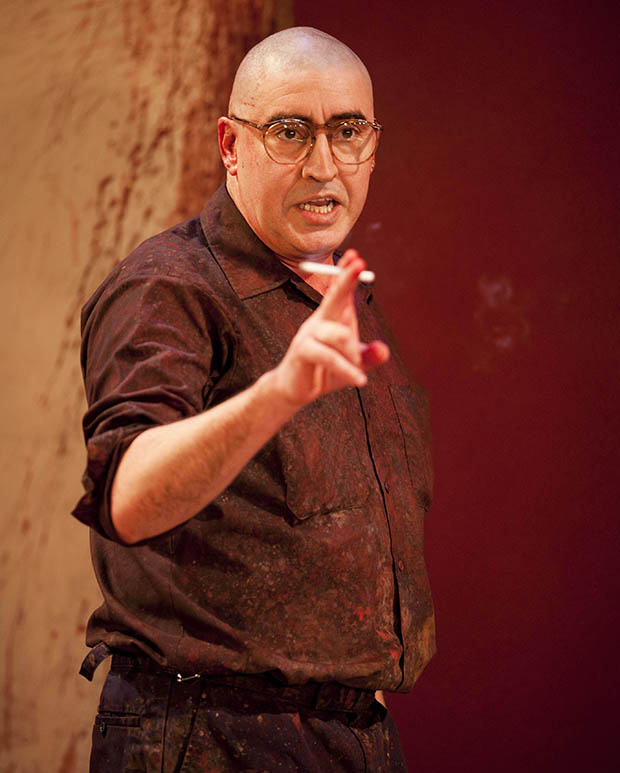Interview: Alfred Molina on the Indelible Experience of Recording Plays With L.A. Theatre Works
The three-time Tony nominee discusses the audio theater company, which has more than 500 titles in its catalogue.
When I first pitched an article about L.A. Theatre Works, one of the world's leading creators of audio theater, I wasn't expecting the company's publicist to offer an actor of Alfred Molina's stature as an interview subject.
Yet the delightfully gregarious three-time Tony nominee is the perfect person to talk about this invaluable company, which has been in operation since 1974 and has more than 500 titles, both classic and contemporary, in its catalog. Molina himself has been in so many that he can't even remember the exact number, ranging from The Lion in Winter, where he plays Henry to Kathleen Chalfant's Eleanor, to Red, where repeats his triumphant performance as artist Mark Rothko opposite Jonathan Groff.
Here, Molina discusses his involvement with the company, and tell us what makes L.A. Theatre Works so special.

(© David Gordon)
How did you become a sort of de facto spokesperson for the company?
I'm very proud of my association with L.A. Theatre Works. I can't even remember how many productions I've done with them. The first one was in the UK in 1989, before I even moved to the States. It was Neil Simon's Plaza Suite with Marsha Mason and Joe Spano as the leads. It was fantastic. Marsha was a big star; I recognized Joe from Hill Street Blues, and so it was terribly exciting. When I came to live in the States, one of my first jobs was with L.A. Theatre Works, doing An Ideal Husband. I've done True West, all sorts of things. Most recently, we did a production of A Walk in the Woods with Steven Weber. We had a wonderful time doing it.
How does the experience of working with them differ from the traditional theatrical experience?
The circumstances of the work is different. It's not like a radio play where there's no audience. You're facing an audience, but you're recording it, so you've got a mic in front of you. You're serving the eventual listening audience, but also the audience in front of you. It's like a hybrid. But you're basically playing to the microphone. I've done stuff for L.A. Theatre Works both ways. We've done recordings where we've just been in a studio and where we're live, and I prefer them live. It feels more like a theatrical event. I always say to people that it's like a posh reading. It's great fun.
Have you worked on any productions where you've thought the medium didn't suit the text?
No, that hasn't been my experience. The beauty of L.A. Theatre Works, and this is a testament to Susan Loewenberg, the artistic director, is that the plays they do are very carefully chosen. If there's any attempt to re-create If it sacrifices the spirit of the play, or the tone or the meaning, then it won't get done. An extreme example is, you know, if Lion King were a play. I don't think they'd be doing Lion King.
The format does lend itself to more literary work. People used to say to me, "How would you describe the perfect theater experience?" As a basic template, I would always say, and this is a cliché now, "The best theater is always about interesting people saying interesting things in an interesting way." That's exactly what Susan does with L.A. Theatre Works. That's the criteria she applies, and then they go from there.
I want to talk about Red as an example, since you've done onstage, on film, and as an audio recording. Were there tangible differences between the three media?
Not really. The only difference, I found, was that when we did it onstage and when we recorded the stage production for PBS, those were, for me, exclusively theatrical experiences. We didn't change anything. The filming had to adapt to us, to the point where, we recorded the whole play on two separate nights, and then we did an extra day to shoot little moments for extra close-ups. That was the only concessions we made to it being a filmed production. When we did the audio version for L.A. Theatre Works, because all the visual elements in the play can't exist for the listening audience, I think we tweaked a couple of lines here and there, with John Logan's permission, to make things clear for people.
"We're priming a canvas now."
Well, kind of. I think the line in the play is, "OK, let's do it." And then we just changed it to almost exactly what you said. "Let's prime the canvas now."
When Susan first said to me that she'd love to do an audio version of Red, my first thought was "How?" The painting of the canvas is such an integral part of the theater experience. I remember every night when we were on Broadway, and this has nothing to do with us, when we got to the priming of the canvas, people would start cheering. There were some nights when people were like YEAAHHHH! like they'd done it themselves. We weren't going to have that here. So what they did at the end, they did a visual facsimile for the audience that was in the theater attending the recording, and for the listening audience, it was just an interlude with some really sexy music. Certainly the format might present limitations technically, but it doesn't present any limitations creatively.

(© Johan Persson)







